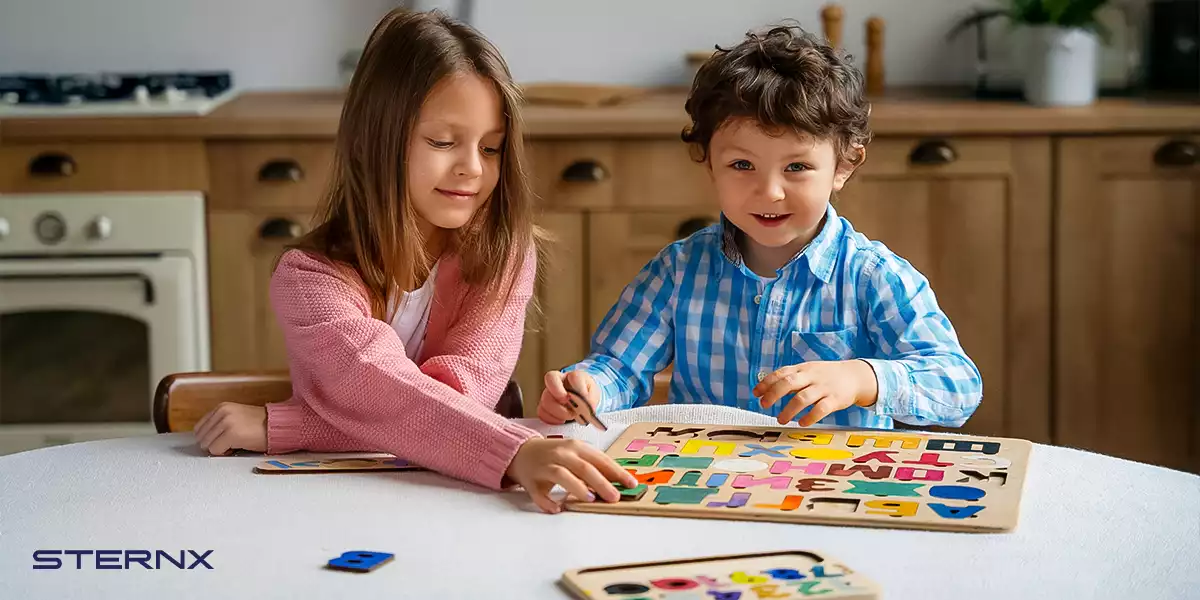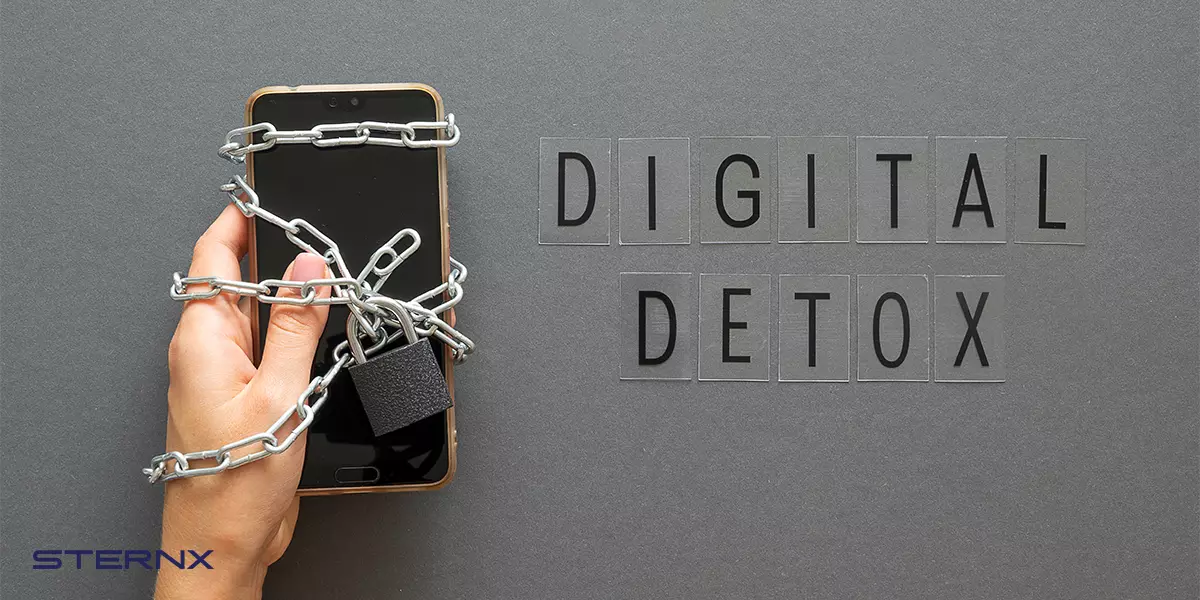Today, children are exposed to screens and technology from a very young age. While technology offers many benefits, excessive screen time can negatively impact children’s development, health, and well-being in numerous concerning ways. Engaging with screens and digital devices too frequently can shorten kids’ attention spans, impair their ability to focus, and reduce time spent on more enriching hands-on learning and creative play. It also increases social isolation and reduces critical family bonding time. That’s why implementing occasional “digital detox” is crucial for helping kids disconnect from technology and enjoy more mindful, present-moment experiences.
Periodic tech-free blocks allow children to fully engage their imagination and creativity in ways that constant digital stimulation often impedes. Time spent away from screens strengthens their social skills through increased interpersonal interaction and collaborative play with family and friends. Digital detox provide kids with more opportunities to get physical exercise and enjoy outdoor time. Unplugged play develops vital life skills like problem-solving, communication, and emotional intelligence. Kids need tech breaks to practice mindfulness, be fully present, and devote their attention to enjoyable hobbies and interests outside of the digital realm.
Establishing technology-free zones and screen-free blocks teaches children self-regulation skills and helps them build healthy relationships with technology that will serve them well throughout their development. Periodic digital detox demonstrate how kids can disconnect from devices and still have fun, while minimizing the pull of compulsive screen habits.
Table of Contents
ToggleImportance of Digital Detox for Children’s Wellbeing
The meteoric rise of screen-based technology in society has resulted in children spending excessive time interacting with digital devices from toddlerhood onward. While technology certainly has educational, social, and recreational value, too much screen exposure can profoundly impact kids’ developmental trajectories in negative ways. Excessive technology use has been linked to a wide array of issues:
- Impaired focus and concentration: Constant digital stimulation rewires the brain’s ability to sustain attention, harming kids’ learning capacities.
- Disrupted sleep patterns: Screen light suppression of melatonin production reduces sleep duration and quality. This impairs growth, mood, focus, memory, and overall health.
- Less time for hands-on learning: Passive technology use displaces interactive exploratory play critical for cognitive, motor skill, and sensory development.
- Higher obesity risks: Sedentary screen-based activities contribute to inactive lifestyles and childhood obesity. Kids need active play for physical fitness and health.
- Social isolation: Excessive use of phones/tablets reduces face-to-face interaction important for language, emotional intelligence and social skills.
- Family disconnection: Parents’ own technology use distracts from quality time together. Kids need engaged presence from caregivers.
Implementing tech-free blocks allows kids to enjoy childhood without constant digital stimulation. It provides time for activities that build creativity, imagination, problem-solving, communication, focus, and overall well-being. Kids learn self-regulation as they practice operating independently from screens and devices. Periodic digital detox teach healthy technology habits that will enable kids to thrive in our digital world.
Tips for Implementing Digital Detoxes and Tech Breaks
Parents instituting tech breaks aim to do so in a manner that empowers children and sets them up for success. Here are some tips for implementing digital detoxes:
Set Clear, Reasonable Rules and Expectations
- Consult expert guidelines to establish age-appropriate daily screen time limits. Start with smaller durations for young kids.
- Designate device-free locations like bedrooms and the dinner table. Kitchens and playrooms tend to work better as tech zones.
- Create a schedule allocating specific windows for schoolwork, after-school activities, creative play time, reading, etc.
- Involve kids in formulating rules and limits to ensure they feel invested in the process from the start. Have them sign a responsibility pledge.
Start with Short, Manageable Periods of Time Away from Screens
- For young kids or first-time detox, start with 30-60 minute tech fasts to allow gradual adaptation.
- Build up to screen-free weekend mornings or afternoons for enjoying activities together as a family.
- Try making Friday evenings completely screen-free to note the difference it brings compared to normal evenings.
- Work up toward weekend-long or vacation-long unplugging as kids demonstrate readiness.
Replace Screen Time with Engaging Screen-Free Activities
- Get outside for family bike rides, playground time, hiking, playing organized games.
- Break out board games, puzzles, art supplies, musical instruments for hours of analog entertainment.
- Cook or bake something fun together as a family. Turn on some music and make it a dance party!
- Work on DIY projects like making toys or fort building. The more creative the better!
- Schedule family game night with classic entertainment options like charades, talent shows, trivia contests etc.
- Promote reading time with trips to the library for new books. Try starting a family book club.
Incorporate Mindfulness Practices
- Set aside 10-15 minutes for simple breathing exercises, yoga stretches, or basic guided meditation. Help kids improve focus.
- Take mindful walks around the neighborhood noticing sights, sounds, smells. How many bird calls can you hear?
- Create relaxation playlists to listen to while coloring or resting. Mix in natural sounds like gentle rain or ocean waves.
- Have kids keep gratitude journals recalling positive moments from the day before bed.
- Spend time connecting with nature while hiking or playing in the park. Lie on the grass watching clouds.
Make Digital Detoxes Fun and Rewarding
- Promise a special family outing to celebrate successful screen-free blocks – trips to the zoo, aquarium, children’s museum etc.
- Incorporate engaging cultural activities into tech-free times like concerts, shows, museums, miniature golf, arcades etc.
- Let kids help plan what special activities, crafts, or games they want to try out during digital detox time.
- Use tons of encouragement and praise when kids demonstrate independent, tech-free play.
Be a Positive Role Model and Join In
- Assess your own technology use and demonstrate limiting tech time in your daily life. Avoid hypocrisy.
- Refrain from thrusting devices on kids as soon as they’re bored. Resist using screens as pacifiers.
- Make sure to put away your phone and remain present during designated family detox times.
- Participate in activities alongside kids to bond and reinforce positive behaviors. Have fun with them!

Screen-Free Activities to Fill Digital Detox Time
The key to successful tech-free time is filling it with engaging activities that capture kids’ curiosity and get them actively using their bodies and minds. Here are ideas:
Get Active and Work up a Sweat!
- Ride bikes, scooters, skateboards together around the neighborhood or park. Make an obstacle course.
- Visit playgrounds to enjoy monkey bars, slides, swings, and get exercise. Bring ball games like kickball.
- Have hula hoop contests, relay races, and jump rope competitions. See who can skip the longest!
- Check out trampoline parks, pools, and YMCAs for indoor/outdoor rec space during bad weather.
- Go on nature scavenger hunts collecting leaves, pinecones, feathers on the trail.
- Look for active video games that get kids dancing, jumping, and fully engaged with their whole bodies.
Unleash Kids’ Innate Creativity
- Build epic blankets and pillow forts and let imagination run wild with storytelling inside. Add flashlights for adventure.
- Make messes with paint, clay sculptures, beading, woodcrafts. Process-focused art is about freedom.
- Design and make costumes, crowns, mittens, scarves together. Knit a family member blanket.
- Form family bands with pots, pans, spoons as instruments. Have poetry slams. Author comic books.
- Stage talent shows where kids sing, dance, do magic tricks, comedy sets. Film movies using play sets as props.
- Do science experiments like erupting volcanoes, slime recipes, balloon powered cars, sensory bins.
Foster Connection through Collaborative Play
- Unplug with classic board games and puzzles – Monopoly, checkers, Clue, chess, dominoes, etc.
- Have hours of fun with card games like Crazy 8’s, Go Fish, war, rummy, solitaire etc.
- Play word and guessing games like charades, Pictionary, twenty questions, Mad Libs etc.
- Build elaborate structures with blocks, Legos, magnet tiles, k’nex. Take turns adding pieces.
- Reenact stories or make them up as you go using dress-up clothes and props. Record for fun.
Unleash Your Home’s Creative Potential
- Construct living room obstacle courses and forts from furniture, pillows, and blankets. Add tunnels.
- Make music using kitchen items as instruments – pots, pans, spoons, Tupperware, funnels.
- Create sock puppets and record silly puppet shows. Make stop-motion animation shorts.
- Invent new games using household stuff. Beanbag toss into buckets. Underhand ball rolling into cups/targets.
- Have family magic shows. Learn card tricks online step-by-step.
Cultivate a Love of Reading
- Make weekly trips to the local library to let kids explore new books. Start a family book club.
- Take turns reading aloud bedtime stories. Use silly voices to bring characters to life.
- Print favorite online stories or write original tales together. Illustrate and bind into books.
- Choose an engaging book series to read through as a family over weeks/months. Discuss plots and characters.
- Have older kids read aloud to younger siblings. Everyone gets story time.
Embrace the Great Outdoors
- Plan family camping nights in the backyard around a fire ring with tents, s’mores, campfire tales.
- Visit local parks, lakes, hiking trails to enjoy swimming, scavenger hunts, picnics outside.
- Plant a family garden together – from soil prep to sprouts emerging. Make it a learning journey.
- Go stargazing on clear nights. Learn constellations using star charts. Bring telescopes if you have them.
- Have neighborhood scavenger hunts finding objects on a checklist (red flower, pinecone, acorn etc).
Tips for Sticking with Your Digital Detox Plan
Implementing tech breaks and having a digital detox plan improves family bonds, and mental health, and develops vital life skills in kids. However, creating lasting lifestyle changes is challenging. Here are some final tips:
- Involve kids in every step of the planning process so they feel invested in digital detox success.
- Remain patient. Building new habits requires consistency over time. There will inevitably be some resistance.
- Model the behavior you want to see. Limit your own technology use. Live the values you teach.
- Help kids appreciate how less screen time benefits creativity, imagination, focus, family bonds, health.
- Start with shorter, more gradual tech fasts to allow an adjustment phase as new routines develop.
- Use encouragement and praise when kids demonstrate independent screen-free play.
- Try making a checkbox chart to track progress over screen-free blocks and motivate kids.
- Emphasize fun with engaging tech-free activities kids enjoy. Boredom can trigger tech relapse.
- Stick with the approach through ups and downs. Consistency is key for lasting change
Periodic digital detox teaches kids they don’t need constant technology stimulation to learn, grow, create, and have fun. As children relish more time for imagination, bonding, and presence, they will thrive. Tech breaks become an invaluable ingredient for maintaining healthy tech habits and raising balanced healthy kids.
